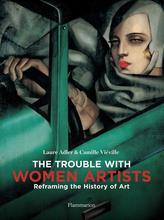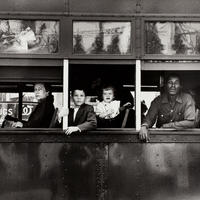More about Cindy Sherman
- All
- Info
- Shop
Works by Cindy Sherman

Contributor
Cindy Sherman is a master of disguise.
You might wonder how an entire career’s work could consist so immensely of self portraiture (although others have certainly done it, too). Sherman’s art explores the endless tropes and stereotypes of femininity that have been crafted and then projected onto women through popular culture throughout the ages. And who better to illustrate the multiplicity and constraints of “femininity” than one solitary woman, the artist herself.
In her draggy portrayal of woman-as-concept, from the housewife, to the seductress, to the aging starlet, to the Renaissance muse, one might suspect a touch of narcissism. Sherman did, after all, pave the way to mega-fame by literally putting herself in the spotlight. But Sherman’s photography is far more thoughtful than your run-of-the-mill selfie, and in fact, she claims that it’s her introversion that partially inspires the do-it-all approach to her work. Sherman prefers to work alone, which means doing all her own makeup, lighting, and naturally, modeling. “I use myself the way I would use a mannequin,” Sherman has said. “[The images are] not autobiographical. They’re not fantasies of mine.”
Not surprisingly, Sherman was into dress up from day one, and can readily psychoanalyze herself. As the baby of her Long Island family, thrift store prom dresses and other treasures became a way for her to shift personas in an effort to hold the attention of her parents and four much older siblings. If our childhood quirks always led to riches and fame, I’d be a world-renowned toilet paper roll hoarder.
Sherman is notorious for early-career appearances in blackface in her 1976 Bus Riders series -- a controversial incident that is now, in the age of the hashtag, lovingly referred to as “#cindygate.” According to Sherman, she used blackface in an attempt to represent different ethnicities (in addition to ages, classes, genders, etc.) in her work. Debatable whether or not that was successful, but what’s certain is that Sherman inadvertently sparked a millennial conversation about whiteness and privilege in the art world.
Twenty years after Bus Riders, Sherman made a commercial film debut. She directed "Office Killer," a campy 1996 B-movie starring Molly Ringwald and a young Carol Kane (Unbreakable Kimmy Schmidt, anyone?) It was received skeptically at best, but personally? I’m about to illegally download it and watch it twice.
If you favor artists of the feminist badass variety, Sherman is one to know. I like to think that she’s been dismantling the patriarchy for four decades, one wig at a time.
Featured Content
Here is what Wikipedia says about Cindy Sherman
Cynthia Morris Sherman (born January 19, 1954) is an American artist whose work consists primarily of photographic self-portraits, depicting herself in many different contexts and as various imagined characters.
Her breakthrough work is often considered to be the collection Untitled Film Stills, a series of 70 black-and-white photographs of herself evoking typical female roles in performance media (especially arthouse films and popular B-movies).
Check out the full Wikipedia article about Cindy Sherman





















